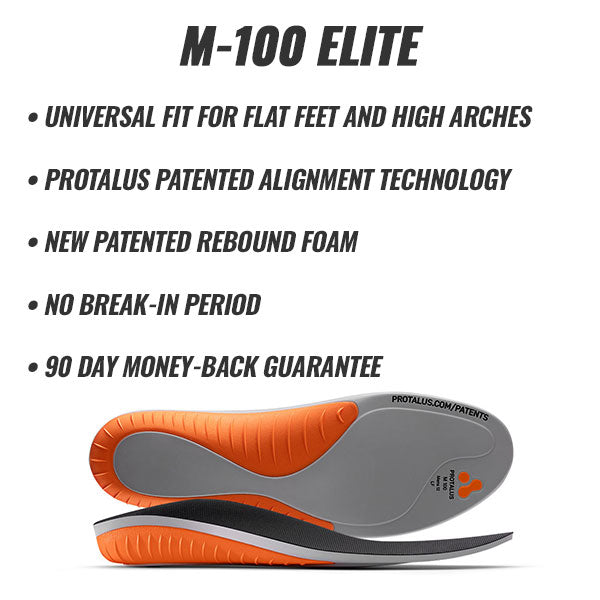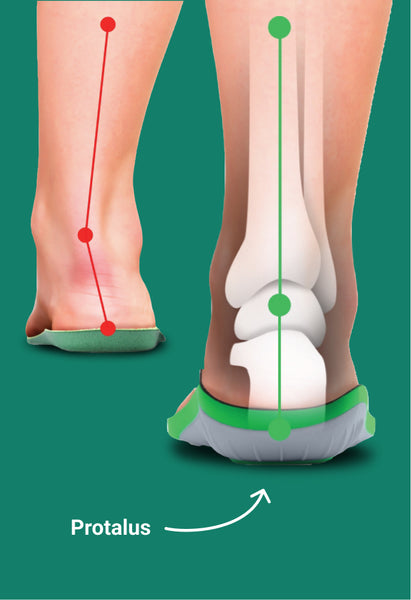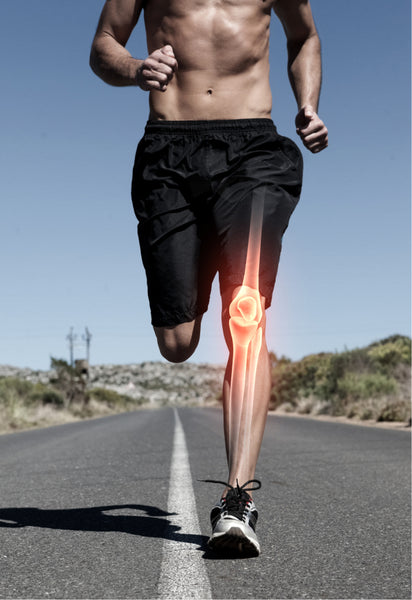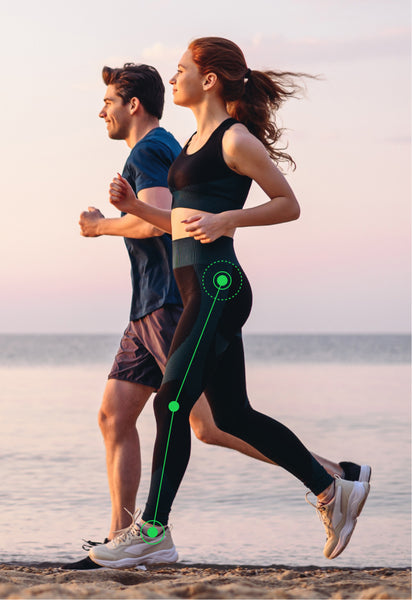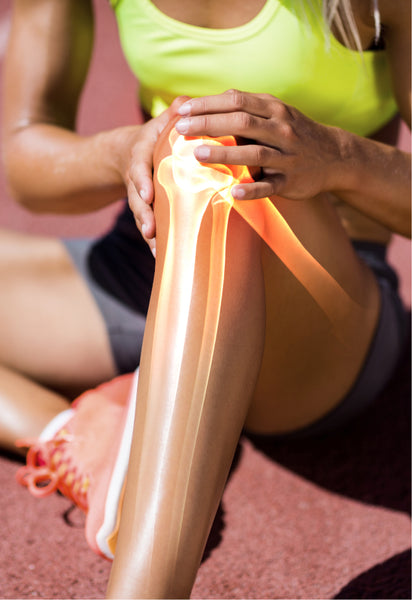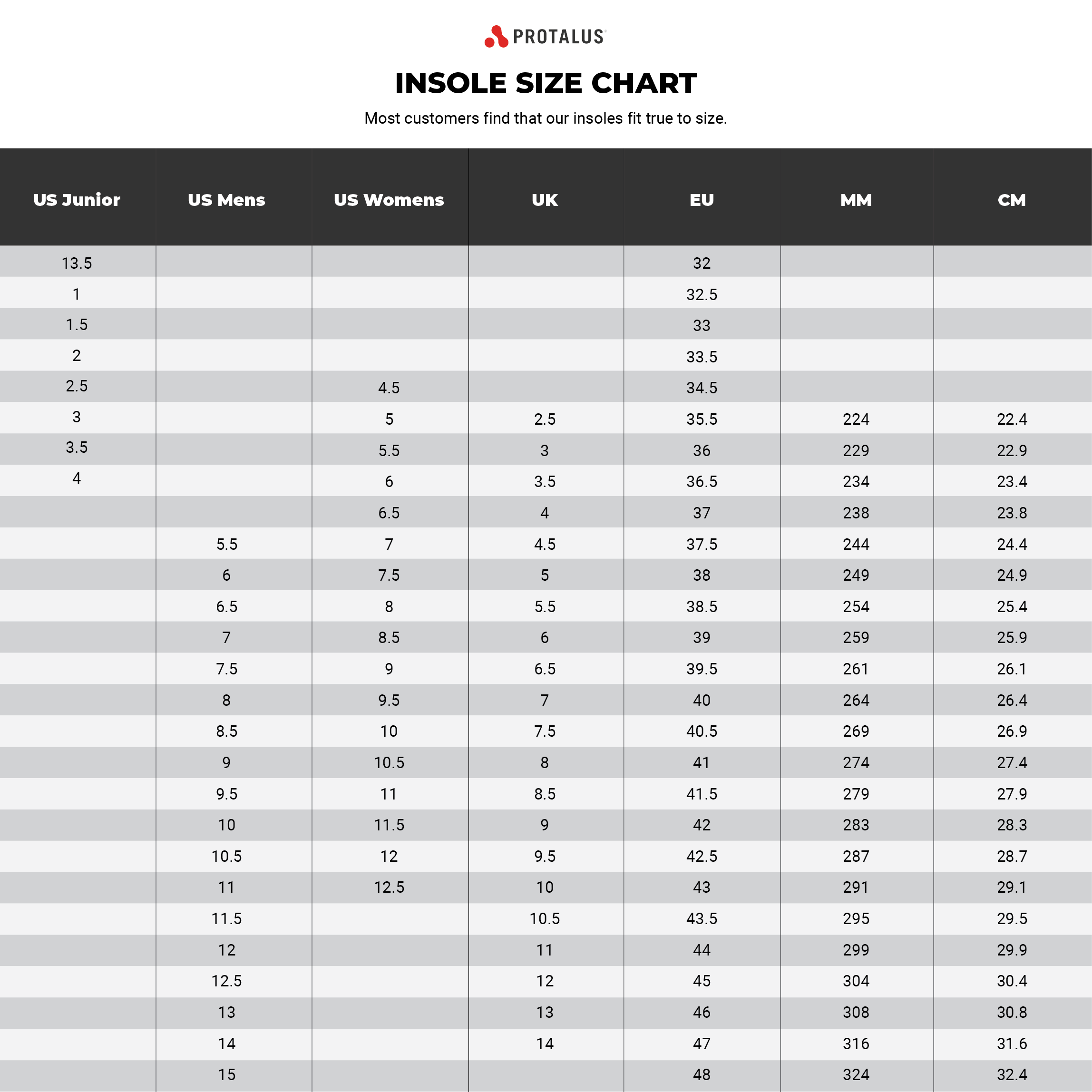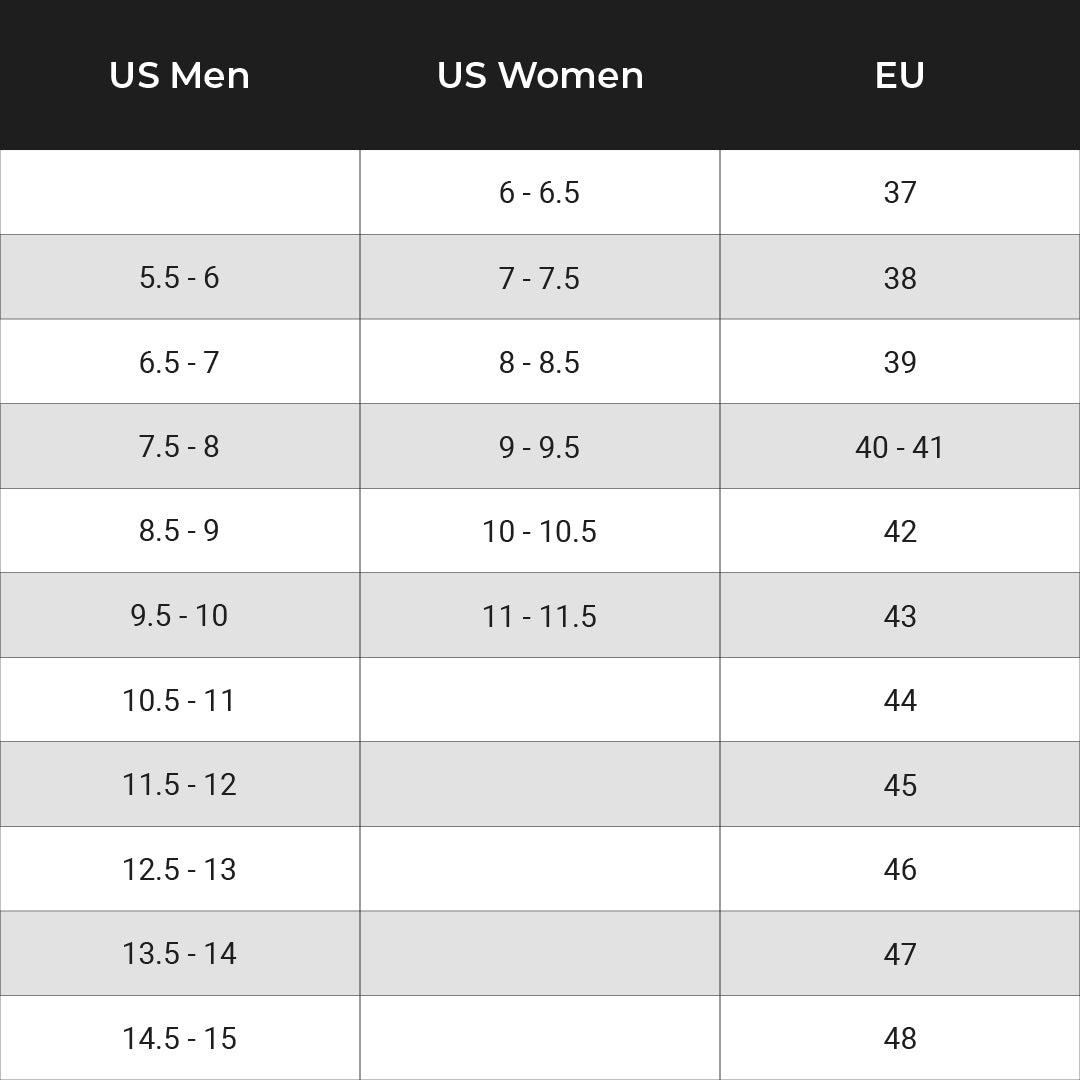Studies & Resources
Choose a Topic
Plantar Fasciitis
Standard reference values of weight and maximum pressure distribution in healthy adults aged 18–65 years in Germany
“There were significant differences in weight and maximum pressure distribution in the forefoot and rearfoot in the different age groups, especially between younger (18–40 years) and older (41–65 years) subjects.”
Body Mechanics
Foot strike and the properties of the human heel pad
"The models used for the calculations clarify the relationship between the foot strike and the shock wave, which it generates."
Effects of different medial arch support heights on rearfoot kinematics
“Our results indicate that different arch support heights have no systematic effect on eversion excursion or the range of internal tibia rotation and therefore might not exert a crucial influence on rear foot alignment during gait.”
Comparison of 3D Hip Joint Kinematics in People with Asymptomatic Pronation of the Foot and Non-Pronation Controls
"However, in people with pronated feet and due to the flattened arch, the foot cannot properly distribute the load from the bodyweight, which leads to biomechanical changes (3). These changes can be responsible for several musculoskeletal injuries of the lower limb, such as knee and lower back pain, Achilles tendinosis and stress fractures (4)."
Effect of fatigue on kinematics, kinetics and muscle activities of lower limbs during gait
"Muscle fatigue, as a serious social problem, affects the performance of daily living activities, especially for workers. Decrease of movement control ability caused by muscle fatigue is one of the risk and intrinsic factors for occupational accidents, such as slips, trips, falls, etc." "The results from the present study concluded that the muscle fatigue changed the kinematics, kinetics and muscle activities of lower limbs during gait, and then could increase the risk rate of occupational accidents."
Step by Step Guide to Understanding the Kinetic Chain Concept in the Overhead Athlete
“The primary conclusion reached through this review is the important role the lower extremity, trunk, and scapular region play in the development of optimal terminal segment acceleration in the overhead throwing and serving motion.” “Failure of any links in the kinetic chain has implications for shoulder and elbow injury in the overhead athlete.”
Measuring hindfoot alignment radiographically: the long axial view is more reliable than the hindfoot alignment view
"Hindfoot alignment was defined as the angular deviation between the tibial anatomical axis and the calcaneus longitudinal axis from the radiographs. Repeat measurements of hindfoot alignment were performed by nine orthopaedic examiners."
The biomechanical effects of pronated foot function on gait. An experimental study
"Pronated foot function affected the whole lower limb kinematic chain during gait. These kinematic alterations could increase the risk of developing MSD. Further studies should elucidate the relationship between pronated foot function and MSD, and, if confirmed, foot function should be evaluated in clinical practice for patients with lower limb and low back pain."
The Influence of Anti-Fatigue Mats on Back and Leg Fatigue
"Spectral electromyo-graphic (EMG) analyses indicated that mats reduce localized muscle fatigue in the erector spinae muscle only. Furthermore, this fatigue reduction occurred only with the more com-pressible of the two mats tested. These results imply mat localized muscular fatigue in the leg may not be relieved with “anti-fatigue” mats and some of these mats only benefit the back."
Relationships between Plantar Pressure Distribution and Rearfoot Alignment in the Taiwanese College Athletes with Plantar Fasciopathy during Static Standing and Walking
"Higher plantar load mainly distributed on the medial part of the foot, and that this situation was accompanied by a rearfoot valgus in bipedal static stance."
Standard reference values of weight and maximum pressure distribution in healthy adults aged 18–65 years in Germany
"There were significant differences in weight and maximum pressure distribution in the forefoot and rearfoot in the different age groups, especially between younger (18–40 years) and older (41–65 years) subjects."
A heel cup improves the function of the heel pad in Sever's injury: effects on heel pad thickness, peak pressure and pain
"A heel cup, providing an effective heel pad support in the sports shoe, improved the heel pad thickness and reduced heel peak pressure in Sever's injury with corresponding pain relief."
The effect of foot orthotics and gait velocity on lower limb kinematics and temporal events of stance
"Research is limited, however, on the potential of foot orthotics to control the mechanics of the foot during walking. The purpose of this study was to examine the interactive effect of foot orthotics and two walking speeds on the angular changes at the rearfoot, ankle, and knee, and temporal events during stance."
Gait analysis: Alterations in support phase forces using supportive devices
"This study documents changes in momentary distribution of forces under the foot, comparing barefoot gait to that with heel cups, medial arch supports, and low-dye taping."
Comparing the immediate effects of UCBL and modified foot orthoses on postural sway in people with flexible flatfoot
"The aim of the current study was to investigate the immediate effect of a rigid University of California Berkeley Laboratory (UCBL) foot orthosis, a modified foot orthosis, and a normal shoe on the postural sway of people with flexible flatfoot."
Other Conditions
Plantar pressures are elevated in people with longstanding diabetes-related foot ulcers during follow-up
“Plantar pressures assessed during gait are higher in diabetes patients with chronic foot ulcers than controls at several plantar sites throughout prolonged follow-up. Long term offloading is needed in diabetes patients with diabetes-related foot ulcers to facilitate ulcer healing.”
The Prevalence and Factors Associated with Low Back Pain Among People with Flat Feet
“Flat feet are associated with both Acute Low Back Pain and Chronic Low Back Pain. Significant factors of low back pain also included sex, age, occupation, and physical activity.”
The Influence of Anti-Fatigue Mats on Back and Leg Fatigue
“Spectral electromyo-graphic (EMG) analyses indicated that mats reduce localized muscle fatigue in the erector spinae muscle only. Furthermore, this fatigue reduction occurred only with the more com-pressible of the two mats tested. These results imply mat localized muscular fatigue in the leg may not be relieved with “anti-fatigue” mats and some of these mats only benefit the back.”
Orthotic approach to prevention and management of diabetic foot: A narrative review
“For the management of diabetic foot, shoe modifications and orthoses can be used to reduce pressure on the affected foot or provide the foot with increased stability. In addition, the shoe modifications and orthotic devices can relieve patient discomfort during walking.”
Overpronation
Comparison of 3D Hip Joint Kinematics in People with Asymptomatic Pronation of the Foot and Non-Pronation Controls
“However, in people with pronated feet and due to the flattened arch, the foot cannot properly distribute the load from the bodyweight, which leads to biomechanical changes (3). These changes can be responsible for several musculoskeletal injuries of the lower limb, such as knee and lower back pain, Achilles tendinosis and stress fractures (4).”
Measuring hindfoot alignment radiographically: the long axial view is more reliable than the hindfoot alignment view
“Hindfoot alignment was defined as the angular deviation between the tibial anatomical axis and the calcaneus longitudinal axis from the radiographs. Repeat measurements of hindfoot alignment were performed by nine orthopaedic examiners.”
The biomechanical effects of pronated foot function on gait. An experimental study
“Pronated foot function affected the whole lower limb kinematic chain during gait. These kinematic alterations could increase the risk of developing MSD. Further studies should elucidate the relationship between pronated foot function and MSD, and, if confirmed, foot function should be evaluated in clinical practice for patients with lower limb and low back pain.”
The Prevalence and Factors Associated with Low Back Pain Among People with Flat Feet
“Flat feet are associated with both Acute Low Back Pain and Chronic Low Back Pain. Significant factors of low back pain also included sex, age, occupation, and physical activity.”
Relationships between Plantar Pressure Distribution and Rearfoot Alignment in the Taiwanese College Athletes with Plantar Fasciopathy during Static Standing and walking
“Higher plantar load mainly distributed on the medial part of the foot, and that this situation was accompanied by a rearfoot valgus in bipedal static stance.”
The effect of foot orthotics and gait velocity on lower limb kinematics and temporal events of stance
“Research is limited, however, on the potential of foot orthotics to control the mechanics of the foot during walking. The purpose of this study was to examine the interactive effect of foot orthotics and two walking speeds on the angular changes at the rearfoot, ankle, and knee, and temporal events during stance.”
Gait analysis: Alterations in support phase forces using supportive devices
“This study documents changes in momentary distribution of forces under the foot, comparing barefoot gait to that with heel cups, medial arch supports, and low-dye taping.”
Comparing the immediate effects of UCBL and modified foot orthoses on postural sway in people with flexible flatfoot
“The aim of the current study was to investigate the immediate effect of a rigid University of California Berkeley Laboratory (UCBL) foot orthosis, a modified foot orthosis, and a normal shoe on the postural sway of people with flexible flatfoot.”
Insole Design
Effects of different medial arch support heights on rearfoot kinematics
“Our results indicate that different arch support heights have no systematic effect on eversion excursion or the range of internal tibia rotation and therefore might not exert a crucial influence on rear foot alignment during gait.”
Comparison of 3D Hip Joint Kinematics in People with Asymptomatic Pronation of the Foot and Non-Pronation Controls
“However, in people with pronated feet and due to the flattened arch, the foot cannot properly distribute the load from the bodyweight, which leads to biomechanical changes (3). These changes can be responsible for several musculoskeletal injuries of the lower limb, such as knee and lower back pain, Achilles tendinosis and stress fractures (4).”
Measuring hindfoot alignment radiographically: the long axial view is more reliable than the hindfoot alignment view
“Hindfoot alignment was defined as the angular deviation between the tibial anatomical axis and the calcaneus longitudinal axis from the radiographs. Repeat measurements of hindfoot alignment were performed by nine orthopaedic examiners.”
The Influence of Anti-Fatigue Mats on Back and Leg Fatigue
“Spectral electromyo-graphic (EMG) analyses indicated that mats reduce localized muscle fatigue in the erector spinae muscle only. Furthermore, this fatigue reduction occurred only with the more com-pressible of the two mats tested. These results imply mat localized muscular fatigue in the leg may not be relieved with “anti-fatigue” mats and some of these mats only benefit the back.”
A heel cup improves the function of the heel pad in Sever's injury: effects on heel pad thickness, peak pressure and pain
“A heel cup, providing an effective heel pad support in the sports shoe, improved the heel pad thickness and reduced heel peak pressure in Sever's injury with corresponding pain relief.”
Comparing the immediate effects of UCBL and modified foot orthoses on postural sway in people with flexible flatfoot
“The aim of the current study was to investigate the immediate effect of a rigid University of California Berkeley Laboratory (UCBL) foot orthosis, a modified foot orthosis, and a normal shoe on the postural sway of people with flexible flatfoot.”
Gait analysis: Alterations in support phase forces using supportive devices
“This study documents changes in momentary distribution of forces under the foot, comparing barefoot gait to that with heel cups, medial arch supports, and low-dye taping.”
Plantar Fasciitis
Body Mechanics
Other Conditions
Overpronation
Insole Design
Plantar Fasciitis
Standard reference values of weight and maximum pressure distribution in healthy adults aged 18–65 years in Germany
“There were significant differences in weight and maximum pressure distribution in the forefoot and rearfoot in the different age groups, especially between younger (18–40 years) and older (41–65 years) subjects.”
Body Mechanics
Foot strike and the properties of the human heel pad
"The models used for the calculations clarify the relationship between the foot strike and the shock wave, which it generates."
Effects of different medial arch support heights on rearfoot kinematics
“Our results indicate that different arch support heights have no systematic effect on eversion excursion or the range of internal tibia rotation and therefore might not exert a crucial influence on rear foot alignment during gait.”
Comparison of 3D Hip Joint Kinematics in People with Asymptomatic Pronation of the Foot and Non-Pronation Controls
"However, in people with pronated feet and due to the flattened arch, the foot cannot properly distribute the load from the bodyweight, which leads to biomechanical changes (3). These changes can be responsible for several musculoskeletal injuries of the lower limb, such as knee and lower back pain, Achilles tendinosis and stress fractures (4)."
Effect of fatigue on kinematics, kinetics and muscle activities of lower limbs during gait
"Muscle fatigue, as a serious social problem, affects the performance of daily living activities, especially for workers. Decrease of movement control ability caused by muscle fatigue is one of the risk and intrinsic factors for occupational accidents, such as slips, trips, falls, etc." "The results from the present study concluded that the muscle fatigue changed the kinematics, kinetics and muscle activities of lower limbs during gait, and then could increase the risk rate of occupational accidents."
Step by Step Guide to Understanding the Kinetic Chain Concept in the Overhead Athlete
“The primary conclusion reached through this review is the important role the lower extremity, trunk, and scapular region play in the development of optimal terminal segment acceleration in the overhead throwing and serving motion.” “Failure of any links in the kinetic chain has implications for shoulder and elbow injury in the overhead athlete.”
Measuring hindfoot alignment radiographically: the long axial view is more reliable than the hindfoot alignment view
"Hindfoot alignment was defined as the angular deviation between the tibial anatomical axis and the calcaneus longitudinal axis from the radiographs. Repeat measurements of hindfoot alignment were performed by nine orthopaedic examiners."
The biomechanical effects of pronated foot function on gait. An experimental study
"Pronated foot function affected the whole lower limb kinematic chain during gait. These kinematic alterations could increase the risk of developing MSD. Further studies should elucidate the relationship between pronated foot function and MSD, and, if confirmed, foot function should be evaluated in clinical practice for patients with lower limb and low back pain."
The Influence of Anti-Fatigue Mats on Back and Leg Fatigue
"Spectral electromyo-graphic (EMG) analyses indicated that mats reduce localized muscle fatigue in the erector spinae muscle only. Furthermore, this fatigue reduction occurred only with the more com-pressible of the two mats tested. These results imply mat localized muscular fatigue in the leg may not be relieved with “anti-fatigue” mats and some of these mats only benefit the back."
Relationships between Plantar Pressure Distribution and Rearfoot Alignment in the Taiwanese College Athletes with Plantar Fasciopathy during Static Standing and Walking
“Higher plantar load mainly distributed on the medial part of the foot, and that this situation was accompanied by a rearfoot valgus in bipedal static stance.”
Standard reference values of weight and maximum pressure distribution in healthy adults aged 18–65 years in Germany
“There were significant differences in weight and maximum pressure distribution in the forefoot and rearfoot in the different age groups, especially between younger (18–40 years) and older (41–65 years) subjects."
A heel cup improves the function of the heel pad in Sever's injury: effects on heel pad thickness, peak pressure and pain
“A heel cup, providing an effective heel pad support in the sports shoe, improved the heel pad thickness and reduced heel peak pressure in Sever's injury with corresponding pain relief.”
The effect of foot orthotics and gait velocity on lower limb kinematics and temporal events of stance
“Research is limited, however, on the potential of foot orthotics to control the mechanics of the foot during walking. The purpose of this study was to examine the interactive effect of foot orthotics and two walking speeds on the angular changes at the rearfoot, ankle, and knee, and temporal events during stance.”
Gait analysis: Alterations in support phase forces using supportive devices
“This study documents changes in momentary distribution of forces under the foot, comparing barefoot gait to that with heel cups, medial arch supports, and low-dye taping.”
Comparing the immediate effects of UCBL and modified foot orthoses on postural sway in people with flexible flatfoot
“The aim of the current study was to investigate the immediate effect of a rigid University of California Berkeley Laboratory (UCBL) foot orthosis, a modified foot orthosis, and a normal shoe on the postural sway of people with flexible flatfoot.”
Other Conditions
Plantar pressures are elevated in people with longstanding diabetes-related foot ulcers during follow-up
“Plantar pressures assessed during gait are higher in diabetes patients with chronic foot ulcers than controls at several plantar sites throughout prolonged follow-up. Long term offloading is needed in diabetes patients with diabetes-related foot ulcers to facilitate ulcer healing.”
The Prevalence and Factors Associated with Low Back Pain Among People with Flat Feet
“Flat feet are associated with both Acute Low Back Pain and Chronic Low Back Pain. Significant factors of low back pain also included sex, age, occupation, and physical activity.”
The Influence of Anti-Fatigue Mats on Back and Leg Fatigue
"Spectral electromyo-graphic (EMG) analyses indicated that mats reduce localized muscle fatigue in the erector spinae muscle only. Furthermore, this fatigue reduction occurred only with the more com-pressible of the two mats tested. These results imply mat localized muscular fatigue in the leg may not be relieved with “anti-fatigue” mats and some of these mats only benefit the back."
Orthotic approach to prevention and management of diabetic foot: A narrative review
“For the management of diabetic foot, shoe modifications and orthoses can be used to reduce pressure on the affected foot or provide the foot with increased stability. In addition, the shoe modifications and orthotic devices can relieve patient discomfort during walking.”
Overpronation
Comparison of 3D Hip Joint Kinematics in People with Asymptomatic Pronation of the Foot and Non-Pronation Controls
"However, in people with pronated feet and due to the flattened arch, the foot cannot properly distribute the load from the bodyweight, which leads to biomechanical changes (3). These changes can be responsible for several musculoskeletal injuries of the lower limb, such as knee and lower back pain, Achilles tendinosis and stress fractures (4)."
Measuring hindfoot alignment radiographically: the long axial view is more reliable than the hindfoot alignment view
"Hindfoot alignment was defined as the angular deviation between the tibial anatomical axis and the calcaneus longitudinal axis from the radiographs. Repeat measurements of hindfoot alignment were performed by nine orthopaedic examiners."
The biomechanical effects of pronated foot function on gait. An experimental study
"Pronated foot function affected the whole lower limb kinematic chain during gait. These kinematic alterations could increase the risk of developing MSD. Further studies should elucidate the relationship between pronated foot function and MSD, and, if confirmed, foot function should be evaluated in clinical practice for patients with lower limb and low back pain."
The Prevalence and Factors Associated with Low Back Pain Among People with Flat Feet
“Flat feet are associated with both Acute Low Back Pain and Chronic Low Back Pain. Significant factors of low back pain also included sex, age, occupation, and physical activity.”
Relationships between Plantar Pressure Distribution and Rearfoot Alignment in the Taiwanese College Athletes with Plantar Fasciopathy during Static Standing and Walking
“Higher plantar load mainly distributed on the medial part of the foot, and that this situation was accompanied by a rearfoot valgus in bipedal static stance.”
The effect of foot orthotics and gait velocity on lower limb kinematics and temporal events of stance
“Research is limited, however, on the potential of foot orthotics to control the mechanics of the foot during walking. The purpose of this study was to examine the interactive effect of foot orthotics and two walking speeds on the angular changes at the rearfoot, ankle, and knee, and temporal events during stance.”
Gait analysis: Alterations in support phase forces using supportive devices
“This study documents changes in momentary distribution of forces under the foot, comparing barefoot gait to that with heel cups, medial arch supports, and low-dye taping.”
Comparing the immediate effects of UCBL and modified foot orthoses on postural sway in people with flexible flatfoot
“The aim of the current study was to investigate the immediate effect of a rigid University of California Berkeley Laboratory (UCBL) foot orthosis, a modified foot orthosis, and a normal shoe on the postural sway of people with flexible flatfoot.
Insole Design
Effects of different medial arch support heights on rearfoot kinematics
“Our results indicate that different arch support heights have no systematic effect on eversion excursion or the range of internal tibia rotation and therefore might not exert a crucial influence on rear foot alignment during gait.”
Comparison of 3D Hip Joint Kinematics in People with Asymptomatic Pronation of the Foot and Non-Pronation Controls
"However, in people with pronated feet and due to the flattened arch, the foot cannot properly distribute the load from the bodyweight, which leads to biomechanical changes (3). These changes can be responsible for several musculoskeletal injuries of the lower limb, such as knee and lower back pain, Achilles tendinosis and stress fractures (4)."
Measuring hindfoot alignment radiographically: the long axial view is more reliable than the hindfoot alignment view
"Hindfoot alignment was defined as the angular deviation between the tibial anatomical axis and the calcaneus longitudinal axis from the radiographs. Repeat measurements of hindfoot alignment were performed by nine orthopaedic examiners."
The Influence of Anti-Fatigue Mats on Back and Leg Fatigue
Spectral electromyo-graphic (EMG) analyses indicated that mats reduce localized muscle fatigue in the erector spinae muscle only. Furthermore, this fatigue reduction occurred only with the more com-pressible of the two mats tested. These results imply mat localized muscular fatigue in the leg may not be relieved with “anti-fatigue” mats and some of these mats only benefit the back.
A heel cup improves the function of the heel pad in Sever's injury: effects on heel pad thickness, peak pressure and pain
"A heel cup, providing an effective heel pad support in the sports shoe, improved the heel pad thickness and reduced heel peak pressure in Sever's injury with corresponding pain relief.
Gait analysis: Alterations in support phase forces using supportive devices
“This study documents changes in momentary distribution of forces under the foot, comparing barefoot gait to that with heel cups, medial arch supports, and low-dye taping.”
Comparing the immediate effects of UCBL and modified foot orthoses on postural sway in people with flexible flatfoot
“The aim of the current study was to investigate the immediate effect of a rigid University of California Berkeley Laboratory (UCBL) foot orthosis, a modified foot orthosis, and a normal shoe on the postural sway of people with flexible flatfoot.”


